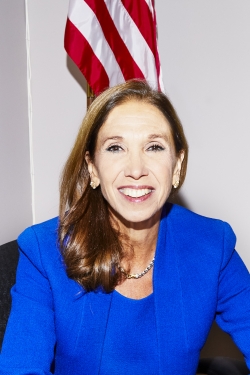Westchester’s Assembly Members Make Case for New Foundation Aid Formula
News Based on facts, either observed and verified directly by the reporter, or reported and verified from knowledgeable sources.

Westchester’s Democratic state Assembly delegation sent a letter last week to the panel reviewing the state Foundation Aid formula urging the group to revise up to 10 points relating to education funding in New York.
The seven Democratic Assemblymembers – Amy Paulin, MaryJane Shimsky, J. Gary Pretlow, Chris Burdick, Nader Sayegh, Dana Levenberg and Steven Otis – called on the Rockefeller Institute of Government to make the changes to be included in its final report that is due to be completed on or about Dec. 1. It was sent two days before the Rockefeller Institute’s deadline to receive public comment on the issue.
Paulin, whose office publicized the letter last week, said that the protection of the Save Harmless provision, where all districts would be ensured at least the previous year’s Foundation Aid, and for the state to continue to provide expenditure-driven aids are critical.
Expenditure-driven aids could include, for example, if a district is faced with high costs to transport children with disabilities, expenses that are traditionally picked up through categorical aid lines that are deemed critical services.
Expenditure-drive aids have been critically important for districts that receive a smaller percentage of their budget in Foundation Aid, according to the Sept. 4 letter.
“You’re using a lot of resources, so without those (costs) being expenditure-driven, you have a real problem. So, that additionally is a must,” Paulin said. “I’m happy to say all 10 are musts, all of them, but those two I point out.”
Paulin also explained that some of the letter’s points are not directly related to Foundation Aid, but speak to overall funding changes that should be considered and often negatively impact districts.
Other points outlined in the letter are how the current formula places a high priority on assessed property value, putting districts in Westchester at a disadvantage; that assessments and income levels within a district, which also factors into the formula, should use the median, not an average, which can skew the amount of Foundation Aid a district receives; maintain the Select Aid Ratio rather than use Current Aid Ratio for building aid, which could force districts to forego much-needed repairs; and updating the Regional Cost Index to more accurately reflect costs in a district’s area.
Burdick said Westchester and Rockland County districts are grouped with more northern counties in the Regional Cost Index, while those in Nassau and Suffolk County are grouped with New York City. As a result, the Mount Vernon School District has lost an estimated $36 million in the 17 years since the state implemented Foundation Aid because of the Regional Cost Index, according to the letter.
For Burdick, the index is one of the most important factors mentioned in the letter, along with the Save Harmless provision. Last year, the Bedford School District, which is in Burdick’s Assembly district, faced a cut of about $1.6 million in Foundation Aid, in large part due to the index and the originally proposed elimination of Save Harmless. The cuts were eventually restored.
He’s hopeful the Rockefeller Institute can make the necessary changes to the formula to assist districts across the state, including in Westchester, for the next budget season. Predictability is crucial so that school officials can effectively fund their districts, he said.
If necessary, the Institute could phase in some changes while continuing to work on making others more equitable.
“This is based on talking to a number of school superintendents, who say this is a really complex job to try to redo the formula in such a very short period of time, and so they were arguing for continuing the evaluation,” Burdick said.
“Some things can be addressed, but others are far more complicated,” he added. “So I support that approach.”
Paulin said she wasn’t sure that the Institute should rush their final report because it is such a complicated and important issue. The report would likely have to be returned sometime in November for it to impact the next fiscal year’s budget. The winter is also the time schools are preparing their budgets for the next academic year, she said.
“I don’t want to do a big surprise with the districts midway into their year,” Paulin said.
Other concerns raised in the Assemblymembers’ letter was having a more equitable High Tax Aid between Westchester and Nassau and Suffolk counties. Since 2014, Nassau and Suffolk counties have received $146 million annually combined while Westchester receives $11 million.
The state should change the tax cap standard so that districts could increase their levy up to the reginal rate of inflation and not be capped at 2 percent. Furthermore, a multiplier of the average free and reduced-price lunch (FRPL) should be considered because with 89 percent of districts participating in the Community Eligibility Provision, an alternative to the household applications for FRPL, fewer families are completing FRPL applications.
Finally, the state should fully fund the Universal Full-Day Prekindergarten program and update the per-pupil rate to accurately reflect costs.

Martin has more than 30 years experience covering local news in Westchester and Putnam counties, including a frequent focus on zoning and planning issues. He has been editor-in-chief of The Examiner since its inception in 2007. Read more from Martin’s editor-author bio here. Read Martin’s archived work here: https://www.theexaminernews.com/author/martin-wilbur2007/
